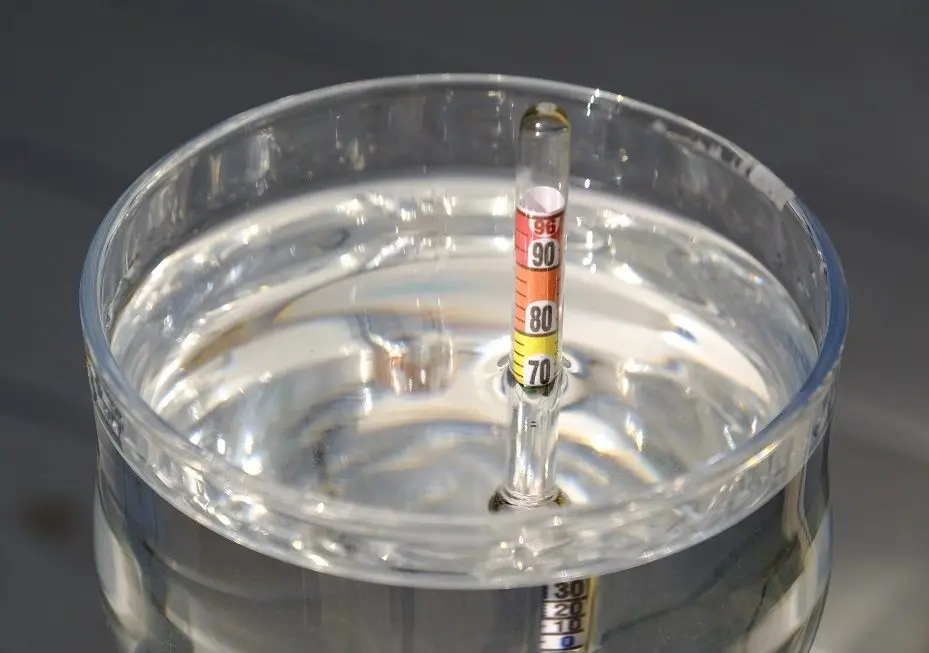Contents
Along with water and alcohol, Braga contains other substances, many of which are harmful to the body. Fortunately, their boiling point is higher or lower than that of ethyl alcohol, so fractional distillation (separation into fractions) can prevent most of the dangerous impurities from entering the finished product. We will consider methods that allow you to select the correct amount of tails and heads of moonshine, which will positively affect the quality of the distillate.
Attention! The information is relevant only for a conventional moonshine still, consisting of a distillation cube and a refrigerator in the form of a coil, it is also possible to have a steamer. For devices with dephlegmators and other devices that simulate the operation of a distillation column, the parameters for selecting tails and heads may differ from those described here. I advise you to clarify this point with the designers of the circuit, manufacturers or equipment sellers. I do not consult on commercial models of devices.
Theory
The amount of harmful impurities depends on the raw materials, water, yeast, temperature, fermentation duration, design of the moonshine still and distillation technology. Even in mash according to the same recipe, the concentration of harmful substances can change every time, but at home, analysis of the composition of the mash is impossible, so you have to take approximate values as a basis.
“Head” moonshine (also called “pervach” or “pervak”) – the initial fraction with a sharp unpleasant odor. Contains the most dangerous impurities: methyl alcohol (many in grain and fruit mash), acetone, acetaldehyde and others. Due to the fact that the boiling point of harmful substances is lower than that of ethyl alcohol, they come out first during distillation, therefore, they can be prevented from entering the main product.


In everyday life, pervach is considered the highest quality moonshine, because it is strong and quickly intoxicates. In fact, this is a poison in its purest form, its use causes toxic poisoning, which is often confused with intoxication.
The moonshine head should not be drunk or used for rubbing. This fraction can go exclusively for technical needs, but because of the unpleasant smell, in most cases it is simply poured out.
“Body” – drinking part, the main goal of the moonshiner (the second name is “heart”). In theory, it contains only ethyl alcohol and water, but in practice there are always other impurities in the “body”, since during distillation it is purely physically impossible to divide the output into clear fractions, to one degree or another, different substances with close boiling points are always mixed, the output is obtained ” lubricated.”
For complete decomposition into fractions, rectification is needed, thanks to which pure ethyl alcohol can be obtained. The disadvantage of the method is that, along with harmful impurities, substances responsible for the organoleptic properties of the drink are removed.
This means that after rectification, the taste and smell of moonshine from different raw materials (sugar, grains and fruits) will be the same, since only ethyl alcohol will remain in the drink.
It should be remembered that the harm and benefits of many substances in the distillate are relative. For example, fusel oils cause the liver to activate before alcohol begins to act, this protects the body from the harmful effects of alcohol.
A study by Vladimir Pavlovich, a professor at the Narcology Research Institute of the Ministry of Health of the Russian Federation, proved that rectified alcohol (vodka) causes alcohol addiction many times faster than distillates – whiskey, cognac, tequila, etc. About 70% of dependent people are vodka alcoholics. The purer the poison (in our case, ethyl alcohol), the faster the addiction develops.
The correct division of moonshine into fractions during distillation on a classic moonshine still allows you to remove almost all harmful substances, but leave those that are responsible for the aroma and taste of the drink, which cannot be done during rectification.
“Tail” moonshine – the third fraction, in addition to ethyl alcohol, contains fusel oils, which give an unpleasant odor, taste and cloudy color. The boiling point of fusel oil is higher than that of ethyl alcohol, therefore, in order to separate the moonshine tail, it is enough to stop collecting the main product – the “body” in time.
Although after distillation a lot of ethyl alcohol remains in the “tails” (up to 40%), the ingress of other substances with it spoils the quality of moonshine, so it is so important to finish the distillation on time.




Unlike “heads”, “tails” are recyclable, they can be added to a new batch of mash (immediately before distillation) or cleaned in a distillation column. Distilling the “tails” a second time on a moonshine is useless, this will not improve the quality!
The question of how much to select “heads” and “tails” is a compromise between the quantity and quality of moonshine. Further, we will use the “golden mean” – parameters that have been tested by more than one generation of moonshiners. You can change them at your discretion both in one direction and in the other. Further, I will pay attention not to specific numbers, but to methods of calculation.
How to select a head of moonshine
First, the mash is brought to a boil. When the first drops appear, the power is reduced to a minimum, then the heating is gradually increased again so that the device enters the operating mode. Performance depends on the design and power of the stove, there are no average parameters here. It is considered normal when the moonshine comes out cold (the temperature is approximately equal to the temperature of the cooling water). This is what you should strive for.
Head separation methods:
1. On sugar
The simplest, but at the same time effective method. Suitable if the sugar content of the mash or the amount of added sugar is known. In fruit or grain mash, sugar content is determined by a special device – a vinometer (hydrometer-saccharometer) before adding yeast.
For example, there are 5 liters of mash with a sugar content of 20%, which means that the total sugar content is 1 kg (5 * 0,2 = 1). The calculation assumes that 1 liter of solution by weight is equal to 1 kilogram, in practice this is not the case, but the error itself has little effect on the result, and the calculation simplifies significantly, so I advise you not to “bother”.
1-60 ml heads are taken from 100 kg of sugar. It is advisable to divide this amount into two distillations, taking 30-50 ml of yield during the first distillation and the same amount during the second.
2. On pure alcohol
It is not always possible to find out the sugar content before fermentation begins. In this case, the first distillation is done without cutting off the “heads”, then the amount of absolute alcohol is measured. For example, if you get 6 liters of distillate with a total strength of 63%, then it contains 3,78 liters of pure alcohol (6 * 0,63 = 3,78). To simplify the calculations, we take the ethyl strength as 100%, although absolute alcohol can only be obtained in laboratory conditions.
During the second distillation, the head fraction is cut off at the rate of 8-15% of the amount of pure alcohol. In our example, this is 0,567 liters (3,78 * 0,15 = 0,567).
One of the varieties of this method is the selection of 1% of the heads of the mash volume, but due to various reasons related to fermentation and sugar concentration, this method cannot be considered accurate, it is better to focus on absolute ethyl.
3. By smell
Suitable for experienced distillers who can identify moonshine heads by an unpleasant odor.
The distillate leaving the apparatus is periodically sniffed, rubbing a couple of drops in the palms, when the pungent smell disappears, they begin to select the “body”. In this way, it is good to check the correctness of calculations based on sugar or alcohol.
4. By temperature
Due to the design features of moonshine stills and the different composition of impurities, this method does not always work well in practice. I recommend using it only as a last resort. I bring it for review.
The evaporation temperature of the “heads” is 65-68°C. During distillation, when the temperature reaches 63°C (the thermometer must be at the inlet to the refrigerator), the heating power is sharply reduced in order to smoothly reach the above temperature range. Then the “heads” are taken away while drops come out of the apparatus. When the output stops, raise the temperature to 78°C and select the “body” to a temperature of 85°C. The values are approximate and may differ depending on the device!
How to separate tails in moonshine
Evidence of the appearance of tails is the fall of the fortress in the jet to 30-45 degrees. In order not to miss this moment, it is desirable towards the end of the distillation to collect the moonshine coming out of the apparatus into a flask or a small jar, in which it is easy to measure with an alcohol meter (the liquid temperature must be 20 ° C). If the strength is high enough, pour the distillate into a common container and substitute the jar again.
During the first distillation (especially fruit and grain brews), you can collect the “body” until the degree of distillate falls below 30%. At the same time, moonshine sometimes becomes cloudy, but that’s okay, the second distillation, in which the beginning of the tails is considered to be 40% fortress, will fix the problem.
Most moonshiners prefer to consider everything that has a fortress below 40 degrees as tails of moonshine. If there is no alcohol meter, moonshine is taken until it burns in a spoon.
When the strength of the output falls below the minimum, the distillation is stopped by stopping the heating, or they continue to collect tailings up to 15-20%, but this wastes energy and time, which in most cases does not justify itself.